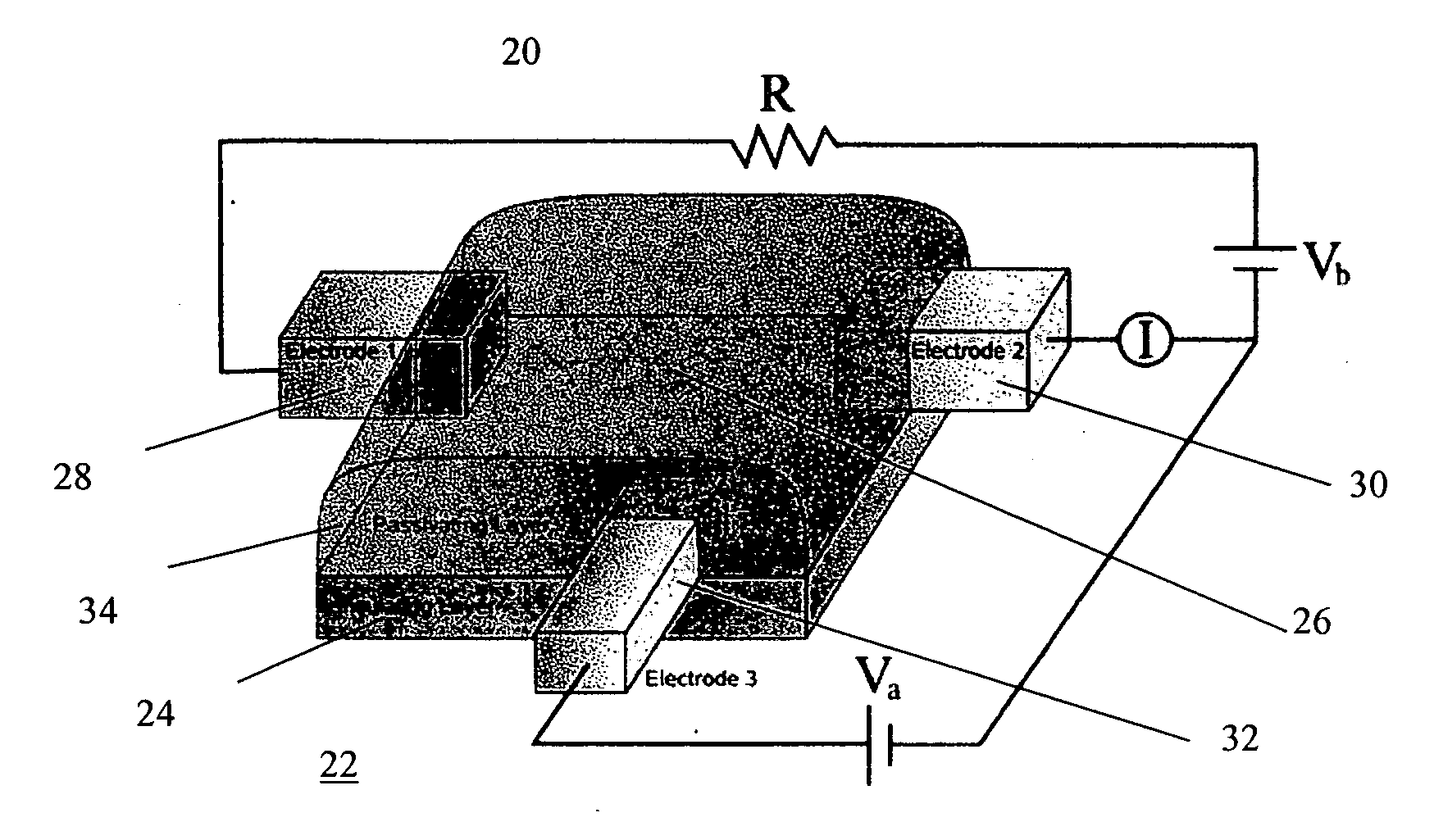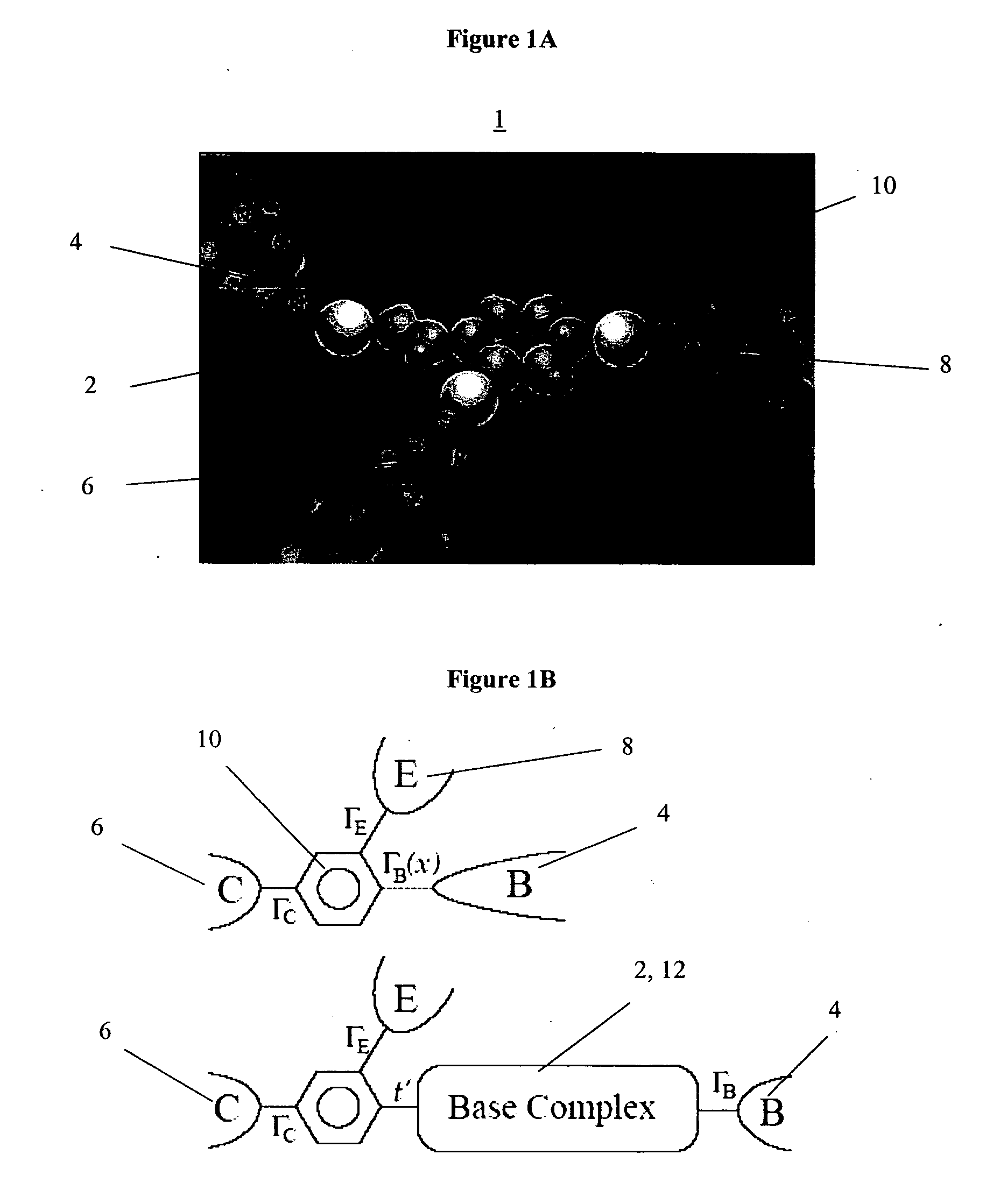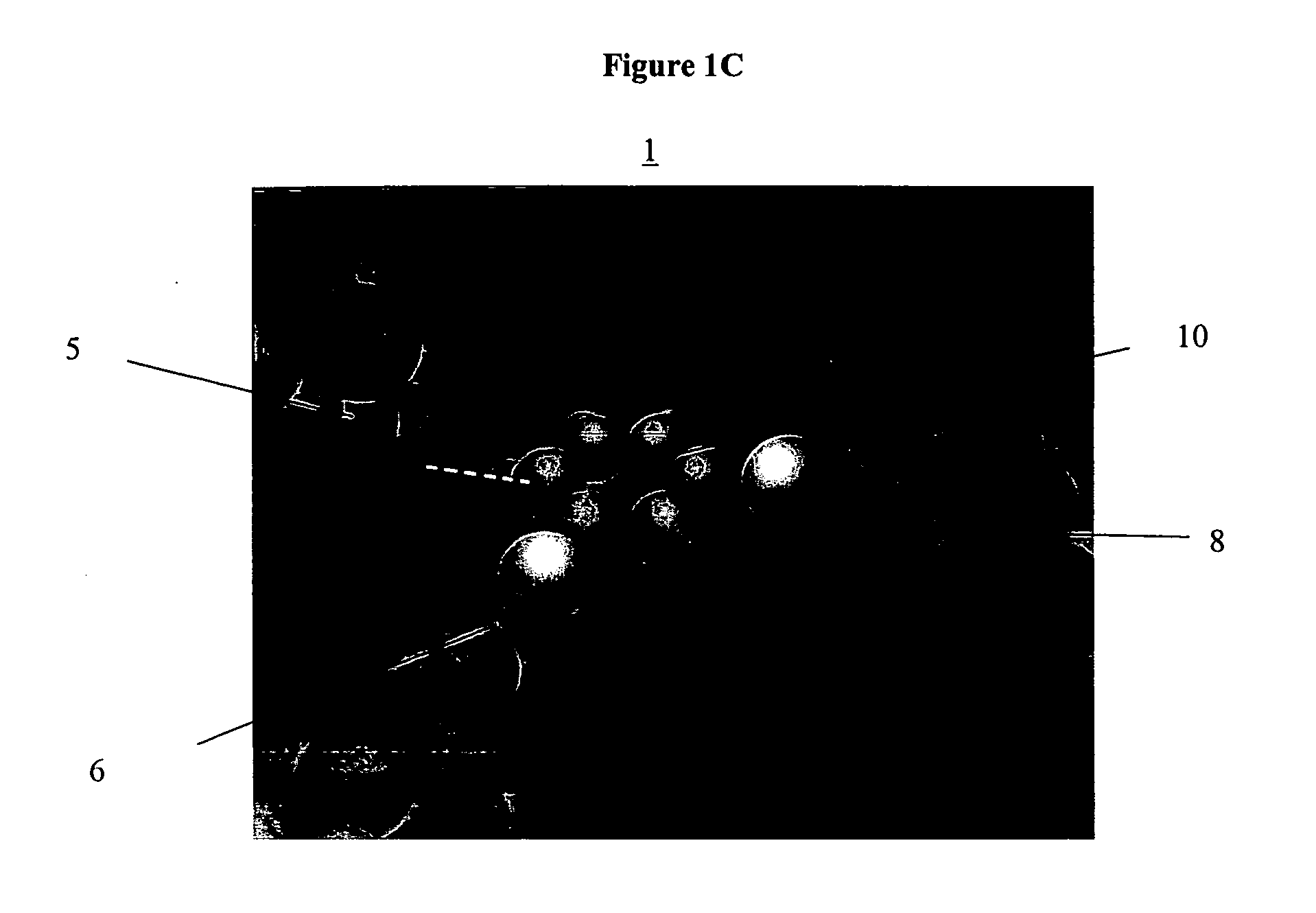Quantum interference effect transistor (QUIET)
a quantum interference and transistor technology, applied in the field of nanoscale switching devices, can solve the problems of the downscaling of the minimum geometries of the transistor-based integrated circuit will eventually be brought to an end, and the inability to meet the requirements of the system designer, so as to reduce the destructive effect of quantum interference, reduce the coherence, and reduce the effect of existing destructive quantum interferen
- Summary
- Abstract
- Description
- Claims
- Application Information
AI Technical Summary
Benefits of technology
Problems solved by technology
Method used
Image
Examples
example 1
[0082] In one embodiment of the present invention, an aromatic molecule is functionalized with “alligator clips” as indicated in FIG. 10, which chemically bind to the source and drain electrodes, which are composed of appropriate metals or semiconductors, and patterned on an insulating substrate, with a separation matched to the molecular geometry. The device is fabricated by self-assembly, as described above. In this configuration, destructive quantum interference blocks the flow of electrons from the source to the drain electrode in the “off-state” of the device. The device may be “switched on” by bringing a conducting body, such as a scanning tunneling microscope tip, into close proximity (within several Angtroms) of the molecule, as illustrated schematically in FIG. 1B. The tunneling interaction of the metal tip with the electronic states of the molecule introduces decoherence, which lifts the destructive interference, and allows current to flow between the source and drain elec...
example 2
[0083] In one embodiment of the present invention, a molecule having an aromatic ring (such as benzene, [14]-annulene, [18]-annulene, or divalent metal phthalocyanine) with a side group (such as a vinyl linkage, an alkene chain, or another polymer tailored to the specific application) is synthesized with “alligator clips” at the appropriate locations on the ring for contact to the source and drain electrodes, as illustrated in FIG. 10. The alligator clips chemically bind to the source and drain electrodes, which are composed of appropriate metals or semiconductors, and are patterned on an insulating substrate, with a separation matched to the molecular geometry. The device is fabricated by self-assembly, as described above.
[0084] In this configuration, destructive quantum interference blocks the flow of electrons from the source to the drain electrode in the “off-state” of the device, when the sidegroup is not activated. The device may be switched on by “activating” the sidegroup, ...
example 3
[0086] In one embodiment of the present invention, a molecule having an aromatic ring (such as for example benzene, [14]-annulene, [18]-annulene, or divalent metal phthalocyanine) with a side group (such as for example a vinyl linkage, an alkene chain, or another polymeric semiconductor) is synthesized with “alligator clips” at the appropriate locations on the ring for contact to the source and drain electrodes, as illustrated in FIG. 10, and at the end or other point of the sidegroup, for attachment to the gate electrode. The source, drain, and gate electrodes are patterned on an insulating substrate from appropriate metallic / semiconducting materials for binding to the alligator clips, with a separation matched to the molecular geometry. The three-terminal device is fabricated by self-assembly, as described above. As one particular example of this class of devices, the molecule can be sulfonated vinylbenzene, whose attachment to metal gate, source, and drain electrodes is illustrat...
PUM
 Login to View More
Login to View More Abstract
Description
Claims
Application Information
 Login to View More
Login to View More - R&D
- Intellectual Property
- Life Sciences
- Materials
- Tech Scout
- Unparalleled Data Quality
- Higher Quality Content
- 60% Fewer Hallucinations
Browse by: Latest US Patents, China's latest patents, Technical Efficacy Thesaurus, Application Domain, Technology Topic, Popular Technical Reports.
© 2025 PatSnap. All rights reserved.Legal|Privacy policy|Modern Slavery Act Transparency Statement|Sitemap|About US| Contact US: help@patsnap.com



